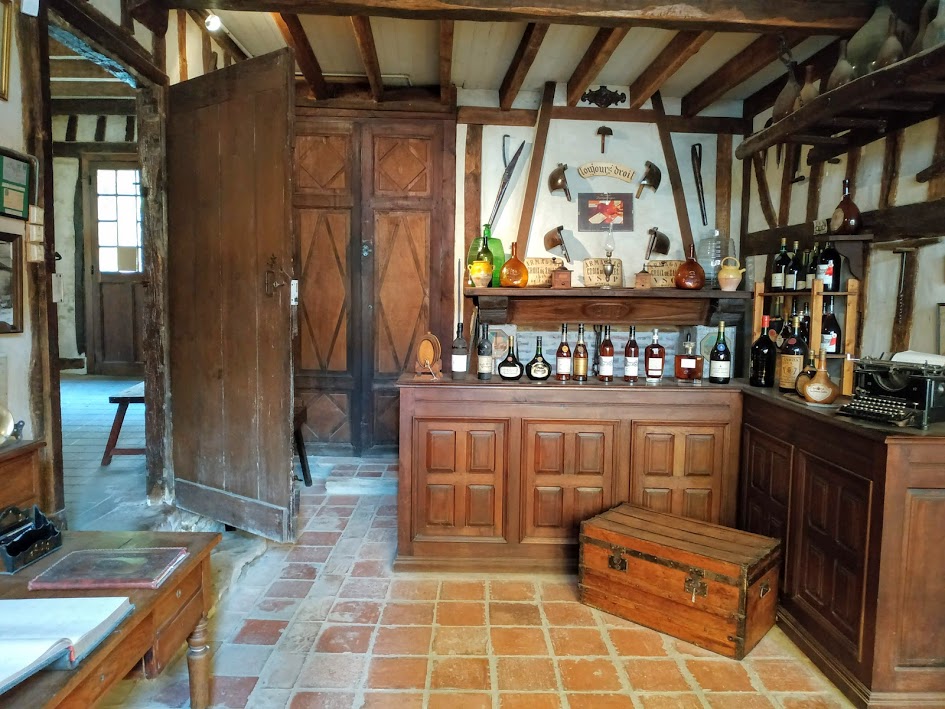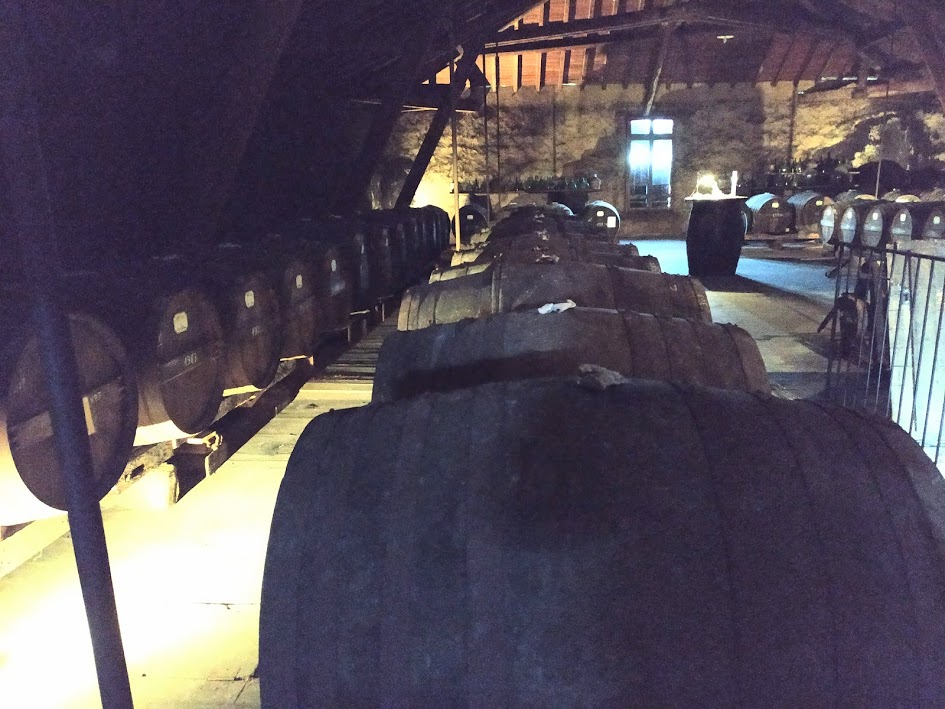A few months ago a young woman contacted me for conversational English lessons; she’s the owner of the oldest armagnac business in the area and wants to be able to conduct tours in English during the summers. Her English is already very good, she just lacks a little confidence, so the lessons are thoroughly enjoyable.
She’d already written a script for her tours, but wants to be able to talk about the business off the cuff, and of course, answer questions; so she asked if I’d like to have a tour, as a guinea pig. Naturally, I jumped at the chance and went to Nogaro, to the Dartigalongue building, for my tour.
We started in the museum; a room filled with all sorts of artefacts including early twentieth century (very un-PC) advertising posters, letters to and from the business, old bottles, tools once used to repair barrels, which almost nobody knows how to use these days, and portraits and photos of the five generations of Virginie’s family who ran the business before her; from Pascal Dartigalongue, who founded it in 1838, his sons, Henri and André, through to Virginie’s grandfather, Pierre. There wasn’t a photo of her aunt, who passed the business on to Virginie as she never married or had children and who, sadly, passed away on the morning of my tour, but I’m sure one will be added to the collection soon.


The next room contains old bottles and demijohns of armagnac, amongst them the oldest registered armagnac in existence, dating from 1848. There are also bottles from as far back as 1829, but these aren’t registered, so don’t count in official terms.

Next we went to the working part of the business; they no longer distill the armagnac here, their job is to age the eau de vie they receive from vignerons in Gascon oak barrels, the process that transforms it into armagnac. There are hundreds of barrels in various rooms, each with its own microclimate; each barrel is labelled in chalk with the age, quantity, alcohol level and type of grape.

I learnt about the different terroirs (a combination of soil type and climate) of the three different armagnac producing areas (bas armagnac, haut armagnac and Tenareze), the three different grape varieties used and the battle to be allowed to continue using Baco grapes, which give structure and the potential to age well to the armagnac, and which are phylloxéra resistant, so require less pesticides; but which are a hybrid of a French and an American grape, so disapproved of by the powers that be. The battle was won in 2005, though this grape can only be grown in the Gers, and purely for armagnac production.

They have to this day the old copper still that was used to distill armagnac, but is no longer in use, as well as huge, ancient wooden barrel-shaped containers, now superceded by stainless steel drums.

The whole place is permeated with a gentle aroma of armagnac, from the first floor storage, which is warm, so the “angels’ share” is about 2-4% a year, to the cool cellars below ground, where the perfume of armagnac is mixed with the musty scent of the earth below your feet.

It was fascinating to learn not just about the history of armagnac in our area, but also the personal history of one family who have devoted their lives to its production. The people who work there these days have all done so for upwards of 25 years; it’s obviously a happy place to spend an entire career, a real family firm.
Virginie wants to do a couple more guinea pig tours, so Nick and other friends of ours will have that treat later this month and if/when friends and family can visit again, I’m sure we’ll be recommending a visit during their stay.
